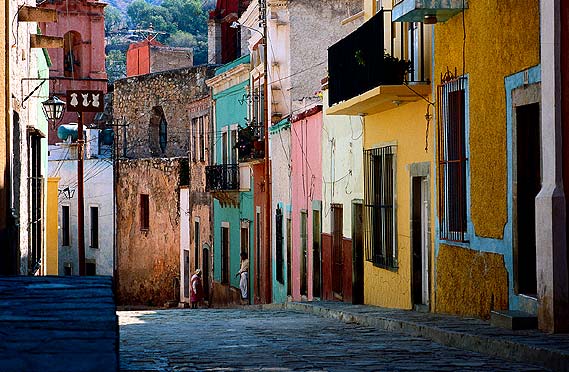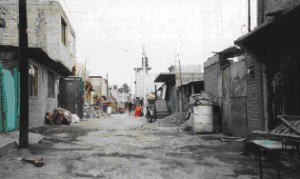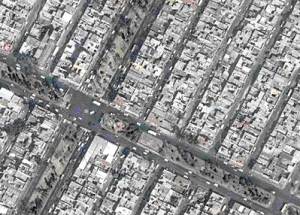The 2010 census provides many indicators of minimal housing quality such as sanitary drainage (indoor drains and toilets), electricity, piped water, overcrowding, and dirt floors. A previous post discussed the rapid expansion of household electricity, especially in remote areas. This post focuses on the other measures of housing quality, and considers three different scales: national, state and municipality.
The national situation
All measures of minimal housing quality improved significantly between 2000 and 2010. The proportion of Mexicans living in houses without sanitary drainage went from 9.9% in 2000 all the way down to 3.6% in 2010, a decline of almost two-thirds. Those without piped water went from 11.2% to 8.6%. It is interesting that many Mexicans that have indoor toilets do not have piped water. The reason for this is that sanitary drainage needs only pipes and gravity while piped water requires pressure-holding plumbing, and pumps driven by either electric or diesel power. Those without piped water must carry water into the house either by bucket or take delivery from a pipa (water truck).
The availability of both sanitary drainage and piped water are extremely important to health, particularly infant health. When a household has piped water, it uses far more water for bathing and mopping, as well as for cleaning food, utensils, clothing etc. This results in far less contamination and disease.
The number of Mexicans living in houses with dirt floors declined by over half, dropping from 14.8% down to 6.6%. Dirt floors are also associated with greater contamination and disease. Overcrowding, defined as more than two persons a room, is still an issue in virtually all areas of Mexico. The proportion living in homes with more than two persons a room went from 45.9% in 2000 to 36.5% in 2010. This is a significant improvement, but more than a third of Mexicans still live in overcrowded housing.
Comparisons between states
Chiapas and Oaxaca made spectacular progress in providing sanitary drainage. The proportion without sanitary drainage was cut by about three quarters. In Chiapas it went from 19.3% down to 5.1%. In Oaxaca, it dropped from 18.1% to only 4.0%. Other states with very impressive improvements include Zacatecas (19.7% to 6.7%), Hidalgo (17.2% to 6.0%), Puebla (11.9% to 3.1%), Michoacán (11.4% to 3.8%) and Veracruz (10.2% to 2.6%). The state with the highest proportion without sanitary drainage is Guerrero with 19.6% (down from 35.2% in 2000). The second highest is Yucatán at 12.6% (down from 24.0%). The lowest rates are in the Federal District (0.1%), followed by Nuevo León and Baja California (each with 0.4%).
 Progress in providing piped water was far less impressive. The situation is worst in Guerrero where the proportion without piped water actually increased from 29.5% to 29.8%. The situation also deteriorated in Morelos (7.3% to 8.2%), Baja California Sur (6.3% to 7.1%), Quintana Roo (5.3% to 6.2%) and the Federal District (1.5% to 1.8%). These states experienced the expansion of low quality informal housing without piped water.
Progress in providing piped water was far less impressive. The situation is worst in Guerrero where the proportion without piped water actually increased from 29.5% to 29.8%. The situation also deteriorated in Morelos (7.3% to 8.2%), Baja California Sur (6.3% to 7.1%), Quintana Roo (5.3% to 6.2%) and the Federal District (1.5% to 1.8%). These states experienced the expansion of low quality informal housing without piped water.
Progress in reducing the proportion living with dirt floors was considerably better, especially in the poorest states: Oaxaca, from 41.6% 2000 down to 19.3% in 2010; Chiapas, 40.9% to 15.7%; Guerrero, 40.0% to 19.6%; Veracruz, 29.3% to 12.4%; Puebla, 24.1% to 9.9%; San Luis Potosi, 23.7% to 9.1%; and Michoacán, 19.9% to 11.0%.
Like the other housing measures, overcrowding (more than two persons a room) is worse in the poorer states. The proportion is highest in Chiapas at 53.9% (down from 65.0% in 2000). Other states with high levels are Guerrero (50.2%), Oaxaca (46.5%), Campeche (46.0%) and Puebla (44.6%). All Mexican states reduced overcrowding by about 25%. Even in wealthy states, overcrowding is significant with the Federal District registering 26.1%, Baja California 29.1% and Nuevo León 29.8%.
The situation in Mexico’s poorest municipalities
Housing is particularly bad in Mexico’s 100 poorest municipalities, which tend to be rural communities occupied by indigenous groups. On average, 21% of the 1.5 million residents of these municipalities do not have sanitary drainage, 47% lack piped water, 64% live in overcrowded housing, 33% have dirt floors and 19% lack electricity.
On a positive note, many of these municipalities have made outstanding progress since 2000. For example, several communities reduced the proportion without sanitary drainage from over 40% to less than 5%. Others increased the percentage with piped water from less than 30% to over 60%. The proportion with dirt floors in several municipalities went from over 60% to less than 20%.
Some of these poor communities now score quite high on some housing variables. For example, in 20 of the 100 municipalities, 98% have sanitary drainage; however in 10 of these 20, over half the people lack piped water. On the other hand, in five of the poorest 100 municipalities, over 90% of the people have piped water. In nine of the 100, less than 15% live with dirt floors. These data reveal that poor housing in Mexico is characterized by a variety of different deficiencies. However, one conclusion is clear: overcrowding remains a problem in all the poorest 100 municipalities. In only seven of the 100 is overcrowding less than 60%; it is over 80% in 78 of Mexico’s 100 poorest communities.
Source of data:
CONAPO, “Índice de marginación por entidad federativa y municipio, 2010” México D.F., October 2011.
Related posts:
- Where are the wealthiest households in Mexico?
- Update on Mexico and the UN Millennium Development Goals (MDGs)
- Is poverty in Mexico on the rise?
- Impressive improvement of housing, especially in rural Mexico
- A case study of low-income housing on the urban periphery
- Vecindades, Mexico City’s inner-city slums

